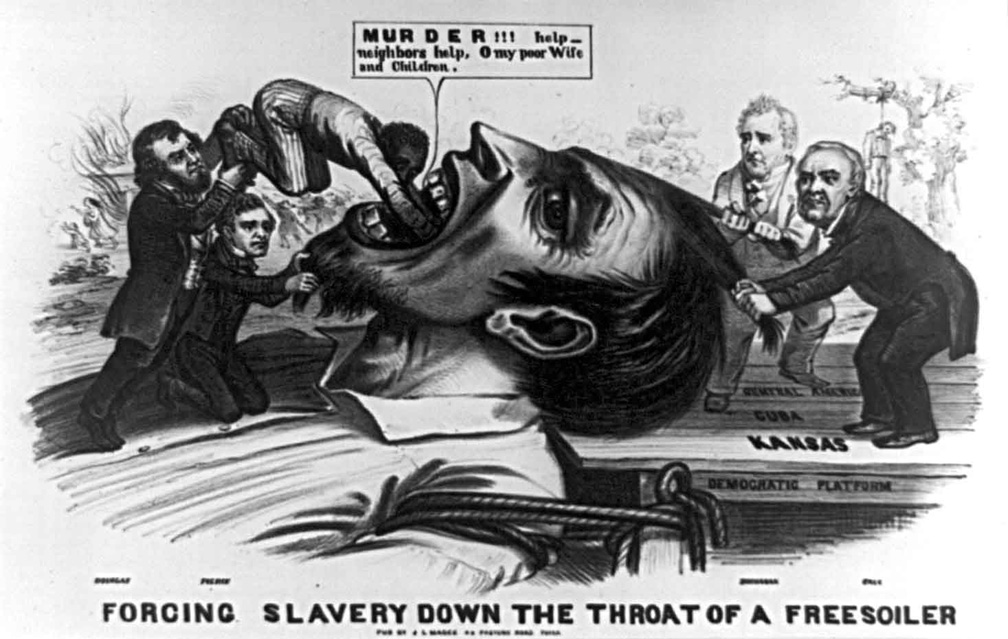Compromise in kansas

Violence was temporarily abated, when President Pierce sent John Geary to Kansas to put down the disturbances. With 1,300 federal troops at his command Geary temporarily accomplished his task.
The issue of Kansas was far from settled. The underlying issue remained- was Kansas to be a free state or slave state. The Kansas legislature passed over the veto of Geary, (who had arrived in Kansas as an opponent of the abolitionists), a constitution that would insure the state would become a slave state. This despite the fact the majority of the citizens of Kansas by 1857 were free soilers, Geary resigned.
He was replaced by Robert Walker. Walker supported presenting the people of Kansas with a referendum on the issue of whether Kansas should be a free or slave state. The pro-slave constitutional convention, meeting at Lecompton, produced a constitutional referendum providing the voters of Kansas with only two choices, accepting slavery in Kansas, or limiting the slaves of Kansas to existing slaves. Free slavers immediately branded the referendum as "The Great Swindle," they refused to participate. Those favoring slavery then voted to ask to have Kansas admitted as a slave state. This was too much for even Stephen Douglas who had supported the Kansas-Nebraska act. He believed that by denying the people of Kansas their right to participate in the decision, was a direct contradiction to his position of popular sovereignty. After a highly emotional and almost violent debate, the House of Representatives failed to admit Kansas as a slave state. The South felt they had been stabbed by Douglas, who lost his Southern support.
 >
>